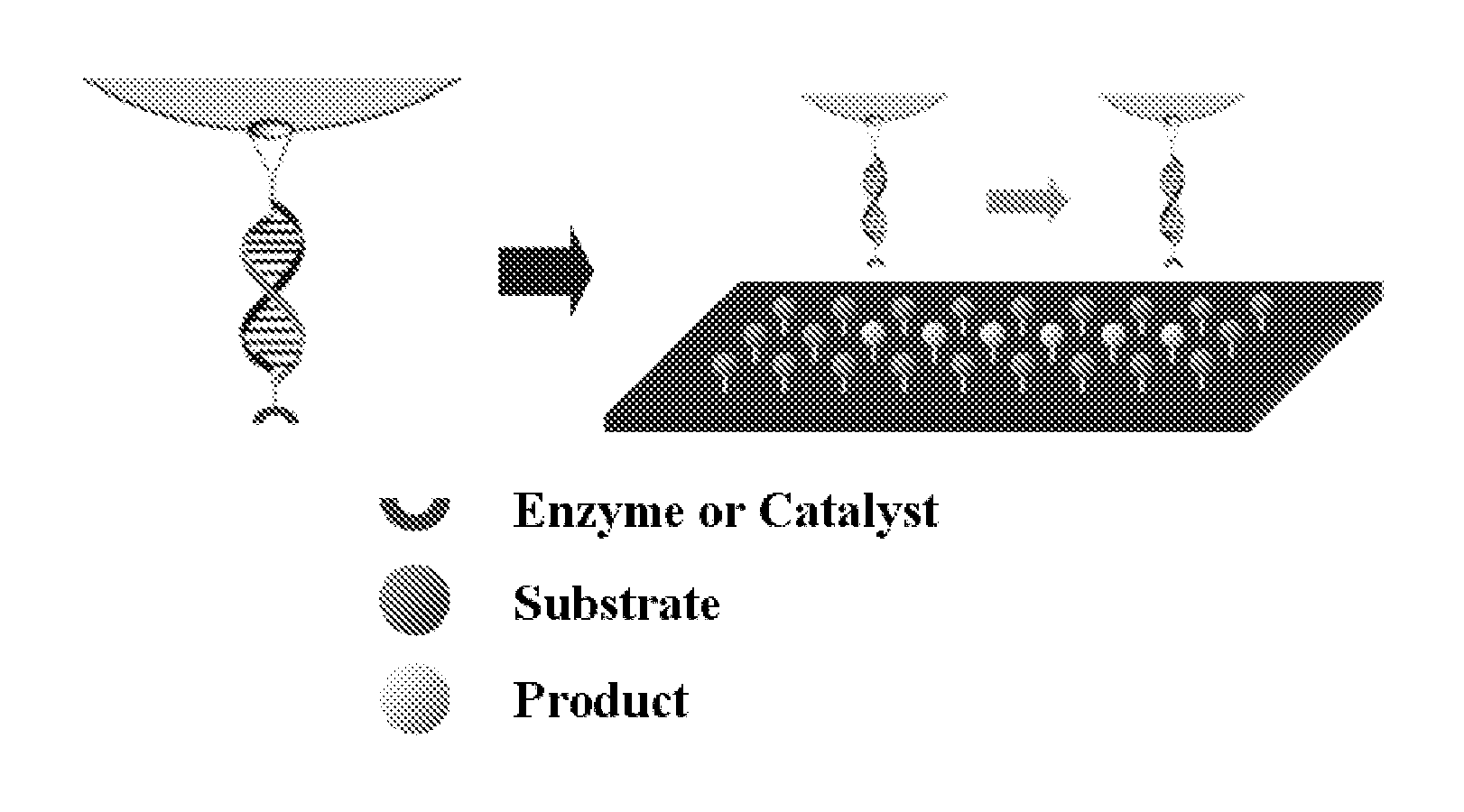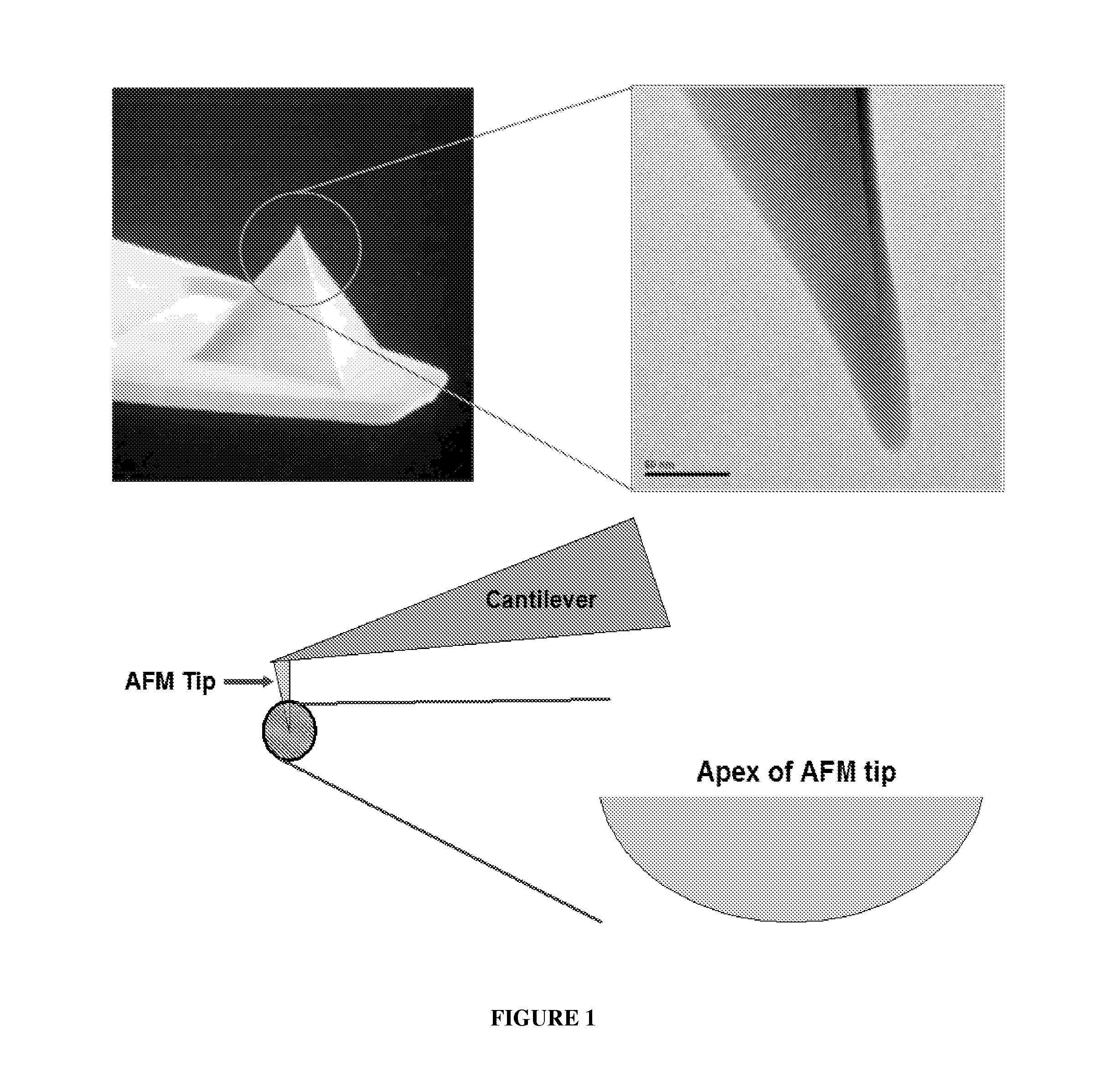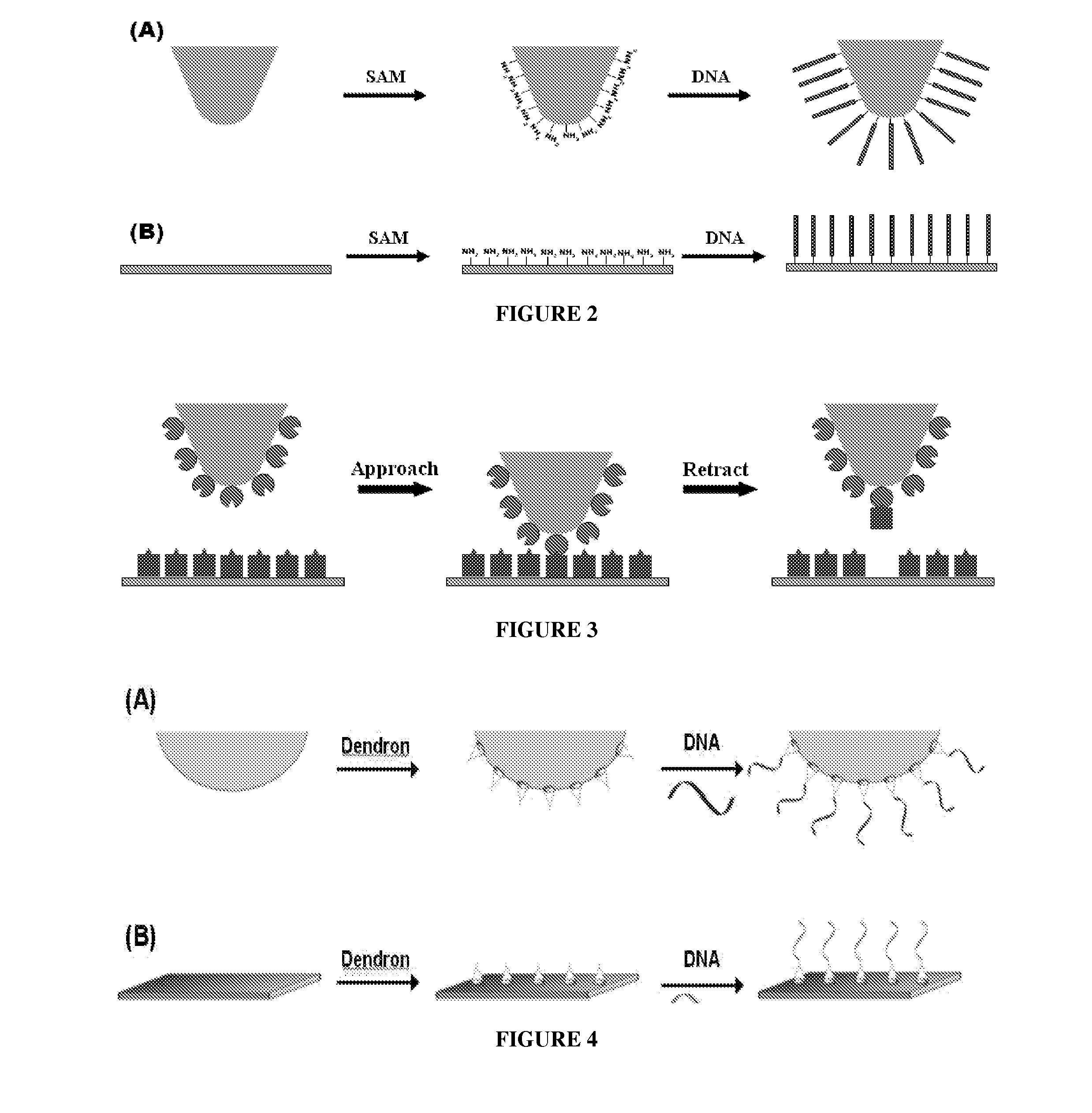Solid Substrates With Surface Bound Molecules and Methods For Producing and Using the Same
a technology of surface bound molecules and solid substrates, which is applied in the direction of nucleotide libraries, instruments, library creation, etc., can solve the problems of reducing the relative population density of biomolecules, afm resolution relatively low, and methods that only show distribution of tens to hundreds of conglomerated ligands in the micron-sized scal
- Summary
- Abstract
- Description
- Claims
- Application Information
AI Technical Summary
Benefits of technology
Problems solved by technology
Method used
Image
Examples
example 1
A Silane Coupling Agent N-(3-(triethoxysilyl)propyl)-O-polyethyleneoxide
[0125]A silane coupling agent N-(3-(triethoxysilyl)propyl)-O-polyethyleneoxide urethane (TPU) was purchased from Gelest. All other chemicals are of reagent grade from Sigma-Aldrich. UV-grade fused silica plates were purchased from CV1 Laser. Polished Si(100) wafers (dopant: phosphorus; resistivity: 1.5-2.1 Ω·cm) were purchased from MEMC Electronic Materials. Deionized water (18 MΩ·cm) was obtained by passing distilled water through a Barnstead E-pure 3-Module system. All short oligonucleotides were purchased from Bionics (Korea).
Cleaning the Substrates
[0126]Silicon wafers and fused silica plates (for dendron surface coverage analysis; data not shown) were sonicated in Piranha solution [concentrated H2SO4:30% H2O2=7:3 (v / v)] for 4 h. The substrates were then washed thoroughly with deionized water and subsequently immersed in a mixture of deionized water, concentrated ammonia solution, and 30% hydrogen peroxide [5...
example 2
[0136]Mung bean nuclease, which is able to selectively lyse the single stranded DNA (ssDNA), was selected as an enzyme to be used in the experiment. S1 nuclease can replace this enzyme, however, any enzymes that can selectively lyse the ssDNA can be used. The AFM tip was attached with: 5′—NH2-TAA AAA AAA AAA AGC GGT AAG GGA AAT CGC GTC ATA AAA AAA TAT CGA GT-3′. And a substrate surface was attached with: 5′-NH2-ACT CGA TAT TTT TTT ATG ACG CGA TTT CCC TTA CCG CTT TTT TTT TTT TA-3′
[0137]The amino group on 5′-terminal end was used to immobilize the oligonucleotide onto the surface. The length of 50 nucleotides was used to allow discrimination with the short DNAs cleaved by the enzyme. Synthesized DNAs and the reaction products with Mung bean nuclease were analyzed using high performance liquid chromatography (HPLC) to determine if DNAs were lysed by Mung bean nuclease and if there was selectivity between dsDNA and ssDNA. Synthesized ssDNA for the AFM tip was reacted with Mung bean nucl...
example 3
Modification of the AFM Tip with Single Molecule Using Antigen-Antibody Interaction
[0142]In addition to methods that use DNA-DNA interaction as illustrated in Example 1 and 2 above, the apex of the AFM tip is modified with single molecule using antigen-antibody interaction (FIG. 10). After silicon (Si) wafer surface is modified with dendron using mesospaced technology, dendron is bound to rabbit anti-BSA (bovine serum albumin) through crosslinking reaction. Upon washing off the remaining rabbit anti-BSA solution, the rabbit anti-BSA bound to the Si wafer surface and BSA in solution are induced to specifically bind each other through antigen-antibody reaction by immersing the matrix in the solution containing BSA. As with the Si wafer, the AFM tip is first modified with dendron, and modified again with rabbit anti-BSA through crosslinker. The Si wafer and the AFM tip are installed in the AFM apparatus, and then the AFM tip is induced to approach to the Si surface. Through repeated tr...
PUM
 Login to View More
Login to View More Abstract
Description
Claims
Application Information
 Login to View More
Login to View More - R&D
- Intellectual Property
- Life Sciences
- Materials
- Tech Scout
- Unparalleled Data Quality
- Higher Quality Content
- 60% Fewer Hallucinations
Browse by: Latest US Patents, China's latest patents, Technical Efficacy Thesaurus, Application Domain, Technology Topic, Popular Technical Reports.
© 2025 PatSnap. All rights reserved.Legal|Privacy policy|Modern Slavery Act Transparency Statement|Sitemap|About US| Contact US: help@patsnap.com



